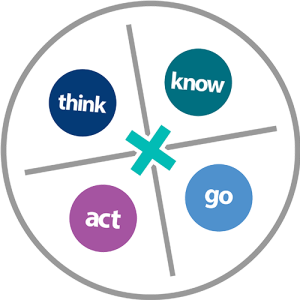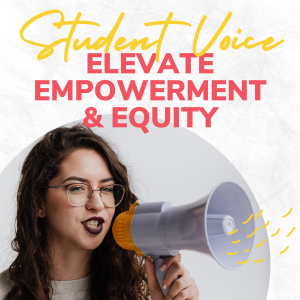[vc_row][vc_column][/vc_column][/vc_row][vc_row][vc_column][ultimate_spacer height=”20″][vc_column_text]
Defining College and Career Readiness
At a recent conference, we asked over 250 educators if they identified college and career readiness as part of their stated vision or outcomes for students. About 75% of the participants raised their hands. We then asked them to keep their hands raised if their staff shared an understanding of what it means to be college and career ready. Not a single person left their hand up.
In order for schools to operationalize college and career readiness for all students, it is critical to identify the outcomes schools should be addressing and students should be expected to demonstrate to ensure they are ready to succeed in life beyond high school. Students ready to be lifelong learners have the ability to THINK deeply about what they are doing; KNOW contextually why they learn; ACT purposefully to achieve their goals; and GO successfully through life’s transitions. As such, the Four Keys to College and Career Readiness can be used as an instructional framework to identify key outcomes in each of the four domains (Think, Know, Act and Go) that can and should be used to construct systems that ensure students are college and career ready.
Aloha High School used a handful of strategies to increase advanced program participation with a focus on historically underserved students. One key strategy was the use of the Four Keys as a curricular framework for an elective Advanced Placement (AP) European History course. In 2001, Steve Wilson, the department chair for Social Studies, was asked to design an AP European History class for sophomores focused on critical thinking skills (Think), key learning strategies (Act), and key content knowledge (Know) with an emphasis on critical reading and writing. While AP courses in the early 2000s often focused on specific content knowledge, the course was designed to emphasize skill development and not just content acquisition. The department agreed to not fixate on AP scores, but to highlight the number of students participating as sophomores and more importantly the increase in student participation in AP US History (11th grade) and AP Government and Economics (12th grade).
[/vc_column_text][ultimate_spacer height=”20″][vc_column_text]
Outcomes
In 2009, AHS was recognized for its participation rates in AP exams. Prior to implementing the sophomore AP European course, AHS had seven total sections of AP including one section of AP US History. By 2008, AHS had over 40 sections of AP including four sections of AP US History and three sections of AP Government and Economics. More importantly, AP exam taking rates and success in terms of students scoring 3 or higher increased by over 500%.
This is just one example of how schools can use the Four Keys as a framework to think more holistically about how to prepare students to be ready for life after high school. While many schools, offer AP courses, the leaders at Aloha High School strategically thought about how those classes could be used to do more than simply teach students content. Instead, they were explicit about giving students the opportunity to develop the critical thinking skills and behaviors that ensure not only success in AP courses, but also as they continue to learn and work after high school.[/vc_column_text][ultimate_spacer height=”20″][/vc_column][/vc_row]




